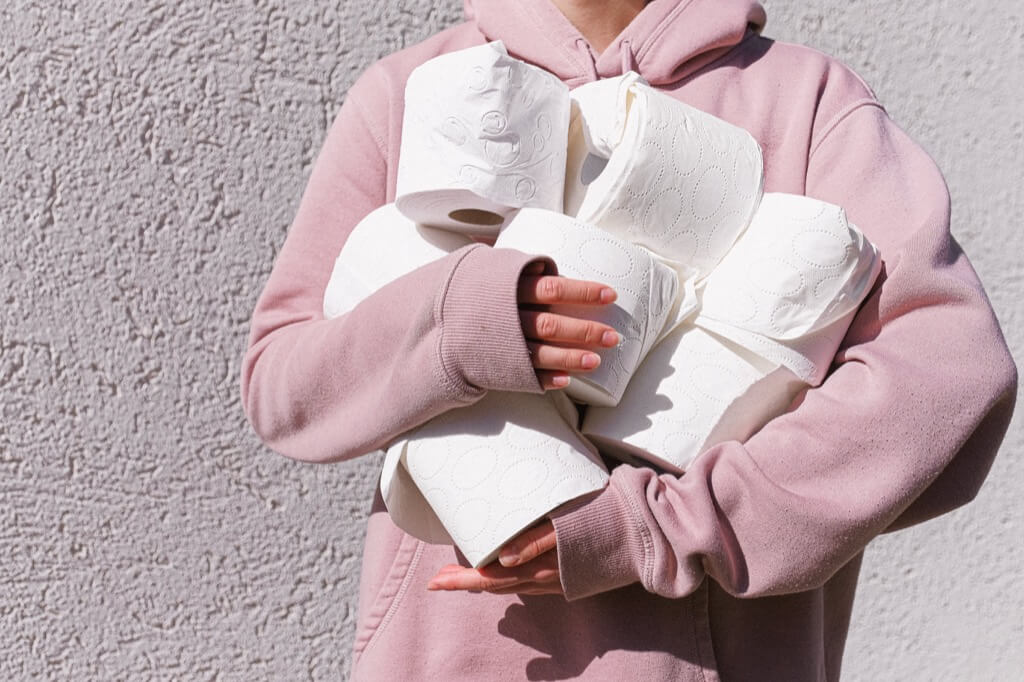Esther Pauline Lederer, the renowned columnist who went by the pseudonym “Ann Landers,” sparked a colossal debate in 1977. She openly shared her preference for hanging toilet paper “under” as opposed to the “over” method. To her surprise, this revelation led to an influx of nearly 15,000 letters, showcasing the depth of people’s sentiments on this topic. Who would’ve thought that the direction one hangs their toilet paper would be such a contentious issue?
A staggering 42% of our 32,000 participants confessed strong emotions attached to their toilet paper orientation choice. Further, another study highlighted that 40% of participants believed that this seemingly trivial matter had been the source of familial disputes. Down in the frosty confines of the Amundsen-Scott Research Station, even researchers couldn’t agree on the right way!
A 1989 survey for the book The First Important Survey of American Habits divulged that a dominant 68% of the respondents were in the “over” camp. Mirroring this, our poll suggested a 71% preference for the “over” orientation. Curiously, when diving deeper into the data, it appeared income played a part in this choice. Those with an income over $50,000 predominantly chose “over”, while those earning less than $20,000 surprisingly leaned towards “under”. But when Africa Nova conducted a similar poll amongst its readers, the results were pretty consistent across income groups.
But Beyond Personal Preference, Could There Be a Hygiene Aspect to This Debate?
A 2011 study on public restrooms unearthed that these places are teeming with bacteria. Men’s and women’s restrooms bore a striking resemblance in terms of germ varieties, albeit with some differences in concentration. This is where toilet paper orientation gains relevance. The “over” orientation is championed in public restrooms, minimizing the risk of users’ hands touching the wall and transferring bacteria.
Still, many argue, “Why worry when you can wash your hands post-contact?” Well, another 2011 study brought forth a startling revelation: 25% of refillable soap dispensers in public bathrooms are contaminated, some with bacteria like Klebsiella pneumoniae. The irony is, that washing hands with such contaminated soap can exacerbate the situation!
While at home, where our microbial environment is relatively constant, the debate becomes less about hygiene and more about convenience. Advocates for the “over” orientation claim it’s easier to grasp and tear. They even cite Seth Wheeler’s 19th-century patent, which explicitly showcases toilet paper draped over. Yet, “under” loyalists argue their method looks neater and is less tempting for pets to play with.
Your Wiping Technique Matters
Ever wondered how you stack up against others in the bathroom department? Our recent polls revealed some intriguing habits. Among 32,000 participants, a staggering 65% fold their toilet paper before wiping, 20% crumple it, 9% wrap it around their hands, and a mysterious 6% opted for “Other.” We’d like to imagine this group might be creating intricate origami creations, but who knows?
Sitting vs. Standing: The Age-Old Question
It’s a debate many never knew existed: Do you wipe while standing or sitting? According to our research with 48,000 voters, 64% go for the sit-and-wipe technique, 28% stand up to the task, and 7% flex their adaptability, claiming they do both.
The Direction of Your Wipe
Diving deeper into the wiping technique, when almost 43,000 participants were asked about their direction of choice, results showed a clear divide between genders. 70% of men favor wiping from front to back, and for women, this figure was even higher at 80%. It seems there’s more than just toilet paper orientation dividing restrooms!
To Bidet or Not to Bidet
Another burning question: after doing your business, do you reach for toilet paper or a bidet? A significant 82% of nearly 50,000 participants said they stick to traditional toilet paper. Only 10% resort to the cleansing powers of water or a bidet. Here’s a pro tip for you: consider investing in a bidet seat attachment. They’re affordable, easy to install, and incredibly eco-friendly. Plus, you can potentially save hundreds annually by reducing your toilet paper consumption. It’s a win-win for you and the environment!
The Wet Wipes Controversy
While some of you (around 4%) may swear by the freshness of wet wipes, be warned: your local sanitation department probably isn’t a fan. Even if the packaging claims they’re flushable, remember, they don’t degrade as quickly as toilet paper. These wipes can cause blockages in sewage systems, leading to unnecessary public expenses. So, before you flush that wet wipe, think twice. For the love of sanitation, don’t treat your toilet like a trash can.
The “Over” Orientation: Advantages and Drawbacks
Advantages:
- Easy Accessibility: The “Over” orientation makes the end of the roll easily visible and accessible, ensuring users can find and tear off the desired amount with minimal hassle.
- Aesthetic Appeal: Many believe the “Over” method is more visually pleasing, aligning with the way manufacturers print patterns on toilet paper.
- Historical Backing: The 19th-century patent by Seth Wheeler, which displayed the toilet paper draped over, provides a historical precedent for this method.
- Hygienic Benefits: In public restrooms, the “Over” orientation reduces the likelihood of users’ hands making contact with potentially germ-laden walls, making it a more hygienic choice.
- Cat and Toddler Deterrence: An “Over” orientation can be less tempting for pets and toddlers to play with, reducing the chances of the roll being unraveled onto the floor.
Drawbacks:
- Potential Overuse: With the end of the toilet paper easily visible and accessible, users might be tempted to use more than necessary.
- Vulnerability to External Factors: In places with drafts or moving air (like near vents), the freely hanging end can flutter, potentially leading to wastage or unsightliness.
The “Under” Orientation: Advantages and Drawbacks
Advantages:
- Neat Appearance: Some users believe the “Under” method looks tidier, as the end of the roll is hidden from view and doesn’t hang down as prominently.
- Controlled Usage: The “Under” orientation may encourage users to be more conscious of the amount they’re pulling, potentially reducing waste.
- Reduced Unraveling Risk: With the end tucked away, there’s less risk of the roll accidentally unraveling, especially in places with drafts.
- Safety from Mischievous Hands: Cats, toddlers, or other playful household members might find it less tempting to bat at or play with a roll hung in the “Under” manner.
Drawbacks:
- Difficulty in Locating the End: Users might struggle to find the end of the roll, leading to frustration or unnecessary fumbling.
- Potential Wall Contact: Especially in tight spaces, users might accidentally brush their hands against the wall when retrieving toilet paper, which could be less hygienic in public restrooms.
- Aesthetics and Pattern Display: Toilet paper patterns, if any, might not display as intended with the “Under” method.




